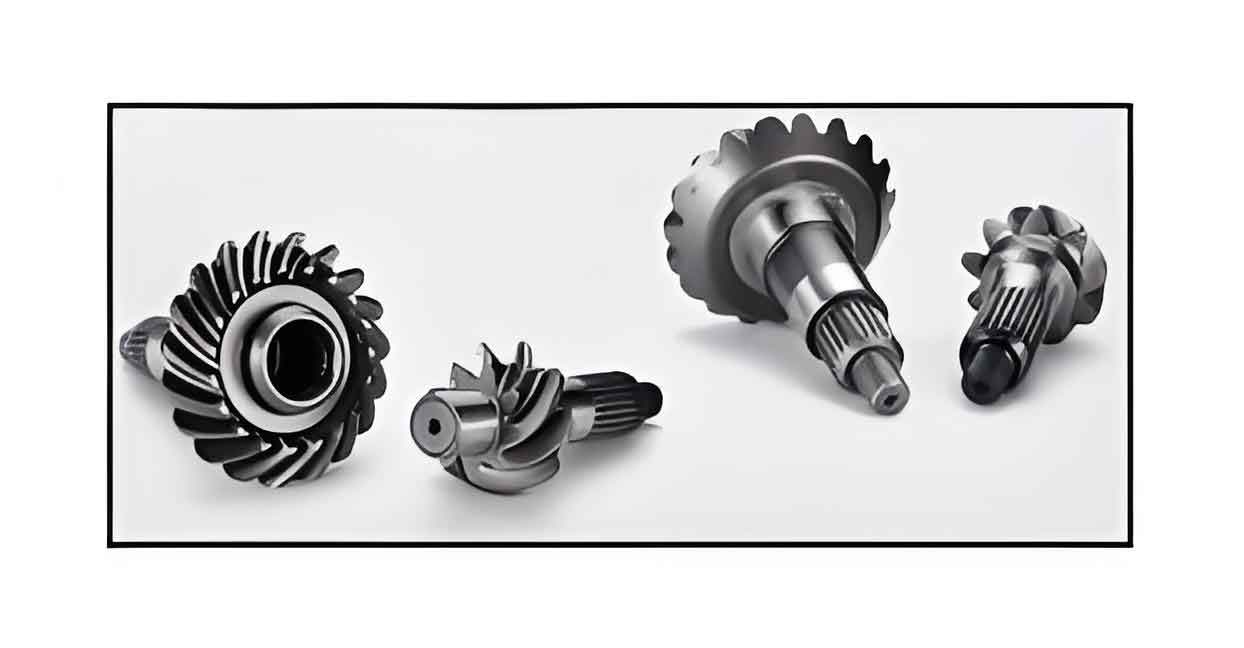Introduction
The Gear Shaft is a fundamental component in various mechanical systems, playing a critical role in transmitting power and motion between different parts of a machine. Gear Shafts are used in a wide range of applications, from automotive transmissions and industrial machinery to aerospace and marine systems. Each application imposes unique requirements and challenges on the Gear Shaft, necessitating a careful analysis to ensure optimal performance and reliability. This article provides a comparative analysis of Gear Shafts used in different applications, highlighting the specific Gear Defects encountered and the strategies to mitigate them.

Key Applications of Gear Shaft
- Automotive Transmissions
- Industrial Machinery
- Aerospace Systems
- Marine Systems
Automotive Transmissions
In automotive transmissions, the Gear Shaft is crucial for transferring power from the engine to the wheels, enabling the vehicle to move efficiently at various speeds. The performance of the Gear Shaft in this application is vital for smooth shifting, fuel efficiency, and overall vehicle reliability.
Common Gear Defects in Automotive Transmissions
- Pitting
- Cause: High cyclic loads, inadequate lubrication.
- Impact: Noise, vibration, potential failure.
- Wear
- Cause: Continuous friction, contamination.
- Impact: Reduced efficiency, increased maintenance.
- Scoring
- Cause: Metal-to-metal contact, high speed operation.
- Impact: Deep scratches, operational issues.
Mitigation Strategies
- Use high-quality lubricants to minimize friction.
- Implement advanced heat treatment processes for increased surface hardness.
- Conduct regular inspections to detect and address early signs of Gear Defects.
Industrial Machinery
Gear Shafts in industrial machinery are subjected to heavy loads and harsh operating conditions. These shafts need to be robust and durable to withstand continuous operation in demanding environments.
Common Gear Defects in Industrial Machinery
- Fatigue Cracking
- Cause: Repeated stress cycles, inadequate material properties.
- Impact: Propagation of cracks, potential catastrophic failure.
- Corrosion
- Cause: Exposure to corrosive environments, inadequate protective coatings.
- Impact: Material degradation, loss of structural integrity.
- Misalignment
- Cause: Installation errors, operational loads.
- Impact: Uneven wear, premature failure.
Mitigation Strategies
- Use materials with high fatigue strength and corrosion resistance.
- Apply protective coatings to prevent corrosion.
- Ensure precise alignment during installation and regular maintenance checks.
Aerospace Systems
In aerospace systems, Gear Shafts must meet stringent standards for reliability, performance, and weight. These shafts are critical for the operation of various flight control and propulsion systems.
Common Gear Defects in Aerospace Systems
- Microcracking
- Cause: High-frequency vibrations, thermal stresses.
- Impact: Potential for crack propagation, failure under high stress.
- Surface Fatigue
- Cause: High cyclic loads, material fatigue.
- Impact: Surface degradation, reduced lifespan.
- Distortion
- Cause: Thermal cycling, high operational temperatures.
- Impact: Misalignment, operational inefficiency.
Mitigation Strategies
- Utilize advanced materials with high fatigue resistance and thermal stability.
- Implement rigorous quality control and testing protocols.
- Use advanced manufacturing techniques to ensure precision and reliability.
Marine Systems
Gear Shafts in marine systems must operate reliably in harsh marine environments, where exposure to saltwater and varying loads can cause significant wear and corrosion.
Common Gear Defects in Marine Systems
- Corrosion
- Cause: Exposure to saltwater, inadequate protective measures.
- Impact: Material degradation, reduced structural integrity.
- Pitting
- Cause: Cyclic loading, inadequate lubrication.
- Impact: Surface damage, increased maintenance.
- Wear
- Cause: Continuous operation, abrasive conditions.
- Impact: Material loss, reduced efficiency.
Mitigation Strategies
- Use corrosion-resistant materials and coatings.
- Ensure adequate lubrication and maintenance to prevent wear and pitting.
- Conduct regular inspections to monitor and address Gear Defects.
Comparative Analysis of Gear Shaft Requirements
| Application | Key Requirements | Common Gear Defects | Mitigation Strategies |
|---|---|---|---|
| Automotive Transmissions | Smooth shifting, fuel efficiency | Pitting, wear, scoring | High-quality lubricants, heat treatment, regular inspections |
| Industrial Machinery | Durability, continuous operation | Fatigue cracking, corrosion, misalignment | Fatigue-resistant materials, protective coatings, precise alignment |
| Aerospace Systems | Reliability, performance, weight | Microcracking, surface fatigue, distortion | Advanced materials, quality control, precision manufacturing |
| Marine Systems | Corrosion resistance, load handling | Corrosion, pitting, wear | Corrosion-resistant materials, lubrication, regular inspections |
Best Practices for Gear Shaft Maintenance Across Applications
1. Regular Inspections
Regular inspections are crucial to detect early signs of Gear Defects and address them promptly.
Tips:
- Use non-destructive testing methods like ultrasonic and magnetic particle inspection.
- Monitor for changes in noise, vibration, and temperature.
2. Lubrication Management
Proper lubrication is essential to minimize friction and wear.
Tips:
- Use lubricants that are suitable for the specific application and operating conditions.
- Implement automatic lubrication systems for consistent lubrication.
3. Alignment Checks
Ensure that the Gear Shaft is correctly aligned with other components to prevent uneven wear and stress.
Tips:
- Use alignment tools to verify and adjust alignment as needed.
- Monitor alignment during regular maintenance checks.
4. Load Management
Avoid overloading the Gear Shaft to prevent stress-related Gear Defects.
Tips:
- Monitor load conditions and adjust operational parameters as necessary.
- Use overload protection devices where appropriate.
Conclusion
The Gear Shaft is a vital component in various mechanical systems, each with its unique set of requirements and challenges. Understanding the common Gear Defects in different applications and implementing effective mitigation strategies is essential for enhancing the performance and longevity of Gear Shafts. By adopting best practices in material selection, manufacturing processes, lubrication management, and regular maintenance, manufacturers and operators can significantly reduce Gear Defects and ensure the reliable operation of Gear Shafts in automotive, industrial, aerospace, and marine applications.
